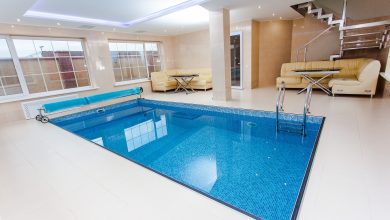A Quick Guide to the Different Types of Heating and Cooling Systems

Where would we be without coolers in the summer and heaters in the winter? Our lives would be an uncomfortable mess for sure. Now you’ve probably heard a lot of different terminologies thrown around when talking about the types of heating and cooling systems that are on the market. Let’s break it down so you have a super clear understanding of what’s going on, and how exactly these systems differ from each other. You might just learn something totally new about the system you have, or you might decide that another system is better suited to your house, who knows!
Split System
Split system units are one of, if not the most popular form of heating and cooling installed into houses. A split system unit comprises a wall-mounted internal unit that looks like a long rectangular box on your wall. This is connected to an external compressor unit that draws in air from outside and converts it to the temperature you set your system to. It does this by using refrigerant technology. Reverse cycle split systems can heat as well. They are often available as either a single unit, for one room, or multi-unit for multiple rooms, and will always only have one compressor.
Having multiple split systems throughout your house allows for flexibility and climate control in each room, rather than the whole house being one temperature because everyone has different preferences. These systems are generally a top choice for living rooms, kitchens, and general everyday living spaces. They always look sleek and stylish, fitting in with home décor. They provide ease of control with remote operation, so you can wake up on a cold winter morning and you won’t even have to leave the protection of your warm and cozy quilt to put the heater on.
Ducted
A ducted heating or cooling system is a fantastic way to have your whole house set to one temperature if that’s what you prefer. A ducted system comprises one central unit that feeds air through vents in the ceiling, dispersing it into each room. Most ducted systems do allow you to turn off certain vents for added flexibility. Ducted systems have their pros and cons. They can be expensive to install and maintain due to their sheer size and the engineering required. They also use a lot of energy to operate.
Some systems also disperse rather dry air and can carry dust and other particles that build up within the vents. This can be harmful to both your lungs and skin but can be avoided with regular servicing and cleaning. On the plus side, ducted systems are a great way to provide your house with heating and cooling without any unsightly units anywhere in your house. The vents are recessed into the ceiling, so you hardly even know they’re there. As previously mentioned, ducted systems give you full house control, and often reach your desired temperature very quickly.
Get a samsung air purifier filter replacement by Surrey Air.
Evaporative
You may be walking down the street and see a large cube sticking out the top of someone’s house. You’ve probably wondered what exactly that is. Well, that’s an evaporative cooler, in case you didn’t already know. Now, the basic theory behind evaporative cooling is that it works on constantly replacing the air in a room. This means it is very important that the areas you want to cool are open and have adequate airflow. The average evaporative cooler needs between 2sqm – 3sqm of open area. Evaporative coolers, in simple terms, work by running air over wet pads. That uses moisture to cool the air as it passes through. There’s some pretty gnarly science behind it that can get a little complicated, but basically, when water transitions from a liquid state to vapor, it absorbs heat and replaces it with cool air.
Evaporative coolers are most commonly found in the form of a ducted system throughout the house but are also available as free-standing portable coolers.
Evaporative cooling is generally less expensive to install and operate compared to refrigerated air conditioning. They increase humidity and work best in dry climates.
Get Braemar heating service from Surrey Air.
Gas
Gas is the most common form of heating. This is mainly due to its efficiency and reliability. Gas heaters come in two main types, ducted and space heating. Ducted gas heaters are basically the same as the aforementioned ducted air conditioning systems but use gas as a fuel source. Space heaters are designed more for localized heating and give you a warm, cozy feeling in the room they are situated in. Some are installed into the wall and flued out the top of your house and some are un-flued and portable in nature. These sorts of heaters are ideal for climates that don’t get extremely cold for long periods of the year. They are a cheap and easy option to keep you warm.
Get hydronic heating service by Surrey Air.
VRV Air Conditioning
Enabled by innovative technology, VRV air conditioning is one of the most sophisticated types of air conditioners in the world. First invented by Daikin during the early 1980s, the VRV air conditioning system features inverter technology compressors. VRV stands for Variable Refrigerant Volume, while other companies use VRF- Variant Refrigerant Flow for the same HVAC term.
VRV air conditioning is the same term as VRF, which is more popular among companies and stands for Variant Refrigerant Flow. If you have a large commercial or residential property, VRV is the best air conditioner you can get. Just like the multi-split air conditioning system, VRV air conditioning features multiple indoor units that are operated from a single outdoor unit. This allows you to keep up with the aesthetics of your home by installing a single VRV Air conditioning outdoor unit, out of sight on your property.
To Sum Up.
There are many types of heating and cooling options out there that are not mentioned in this article. It’s important that you find the right solution for yourself so that you don’t have to be uncomfortable during the weather extremes. If you ever need any assistance in determining what may be best for you, don’t forget Surrey Air Heating and Cooling are always here to help. Our technicians are fully trained and can assess your house to see what would fit best.





